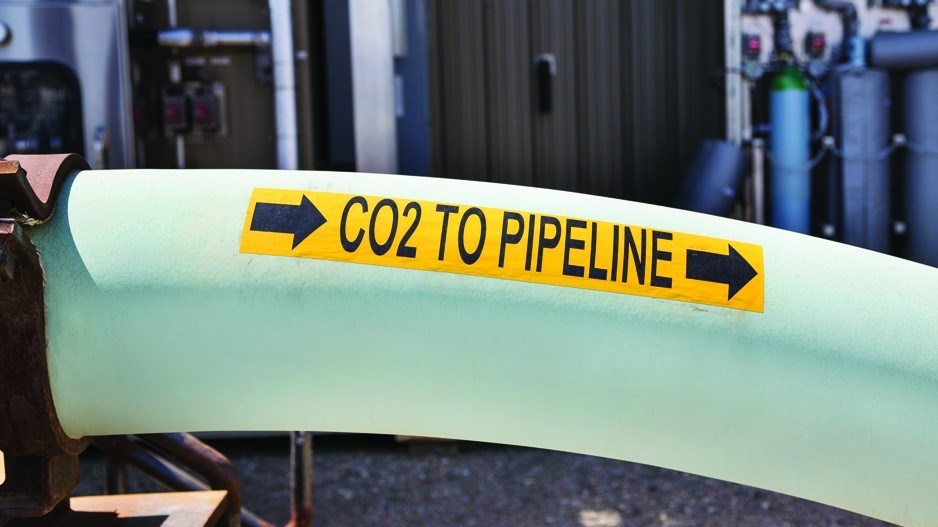Canadian officials attending the 26th Conference of Parties (COP) summit in Glasgow will be pledging to reduce Canada’s greenhouse gas emissions by 40% to 45% by 2030 and getting to zero emissions by 2050.
While policies like carbon taxes are big levers that the government can pull, achieving a 40% reduction in emissions in nine years is a herculean task that will require the private sector to be on board.
“The burden really falls heavily on … oil and gas and transportation,” Werner Antweiler, a business economics professor at the University of British Columbia’s Sauder School of Business. “It’s really the oil and gas sector that really stands out because that’s the one sector where we’ve seen emissions going up.”
A number of Canadian oil and gas companies have signed commitments to reach net zero by 2050.
In B.C., FortisBC has a “30BY30” strategy that aims to reduce its greenhouse gas emissions 30% by 2030, largely through increased use of renewable natural gas (RNG) made from organic waste. The company is aiming to have 5% of its natural gas supply in B.C. composed of RNG by 2025 and 15% by 2030.
Teck Resources (TSX:TECK.B) – B.C.’s biggest mining company – is among the 29 mining majors to sign the International Council on Mining and Metals’ (ICMM) net zero by 2050 pledge.
Teck’s sustainability plan includes a target of a 33% emissions reduction by 2030 and carbon neutrality by 2050.
To put some teeth into its sustainability commitments, Teck recently announced a US$4 billion “sustainability-linked revolving credit facility” that will be tied to meeting, or failing to meet, its environment, social and corporate governance goals.
Other mining companies that have signed the ICMM net zero pledge and have operations in B.C. include Rio Tinto Plc (NYSE:RIO), which operates the BC Works aluminum smelter in Kitimat, and Newcrest Mining TSX:NCM), which owns the Red Chris mine.
For mining, the biggest gains in reducing emissions would be from sourcing power for their operations from non-emitting sources such as renewables or small modular nuclear power plants and by electrifying haul trucks, shovels and other heavy equipment.
Globally, mining produces 4% to 7% of greenhouse gas emissions, according to the McKinsey Global Institute.
The greenhouse gas emissions that mining produces in Canada pale in comparison to those of oil and gas, which represent 26% of Canada’s total.
In July, five of Canada’s biggest oil companies – Canadian Natural Resources (TSX:CNQ), Cenovus Energy (TSX:CVE), Imperial Oil (TSX:IMO), MEG Energy (TSX:MEG) and Suncor Energy (TSX:SU) – signed the Oil Sands Pathways to Net Zero Initiative. The five companies are responsible for 90% of Canada’s oilsands production. Canadian pipeline operator Enbridge (TSX:ENB) has likewise committed to net zero by 2050.
“The net zero pledges one has to look at very carefully, to what extent they’re actually feasible,” Antweiler said. “Be precise. What are you actually suggesting you’re doing? A lot of these promises are still shallow without a detailed analysis. Aspiration but not with a clear implementation plan.”
Under the Oil Sands Pathways pledge, Alberta oilsands producers will need to collectively reduce their emissions by roughly 69 megatonnes (MT) of CO2 equivalent (CO2e) per year.
While reducing methane emissions and increasing electrification of some processes would achieve some reductions, getting to net zero also includes “evaluating, piloting and accelerating” technologies like direct air capture, “next-generation recovery technologies” and small modular nuclear reactors. But the core pathway will be carbon capture and storage (CCS).
Royal Dutch Shell (AMS:RDSA) is one of the global oil and gas majors that adopted a net zero by 2050 commitment, and Shell Canada has been one of Canada’s carbon capture leaders.
It built and operates the Quest CCS plant at its Scotford refinery and chemicals plant near Edmonton. To date it has captured and sequestered five million tonnes of CO2. In July, Shell Canada announced plans to build a second CCS plant at its Scotford upgrader.
“Our plans for Scotford are in line with Shell’s target to become a net-zero emissions energy business by 2050, in step with society,” said Shell Canada president Susannah Pierce.
Shell Canada expects to sanction the new Polaris CCS project in 2023 and have it operating by 2025. It would have a sequestration capacity of 300 million tonnes of CO2 over the plant’s lifetime.
Antweiler pointed out that the Quest facility captures about one MT of CO2e annually, whereas Canada’s oil and gas sector produces about 190 MT CO2e per year.
“You can see the magnitude. So even if you want to go to a 30% reduction or 40% reduction in this sector, you need a whole lot more of carbon capture and storage.”
Prime Minister Justin Trudeau’s government is proposing a new tax credit that would encourage investment in CCS, but Antweiler said the key tool is carbon pricing.
“If the carbon price isn’t high enough, you have to crank it up higher, and then the firms will work towards avoiding paying that tax and invest in carbon capture and storage.” •




